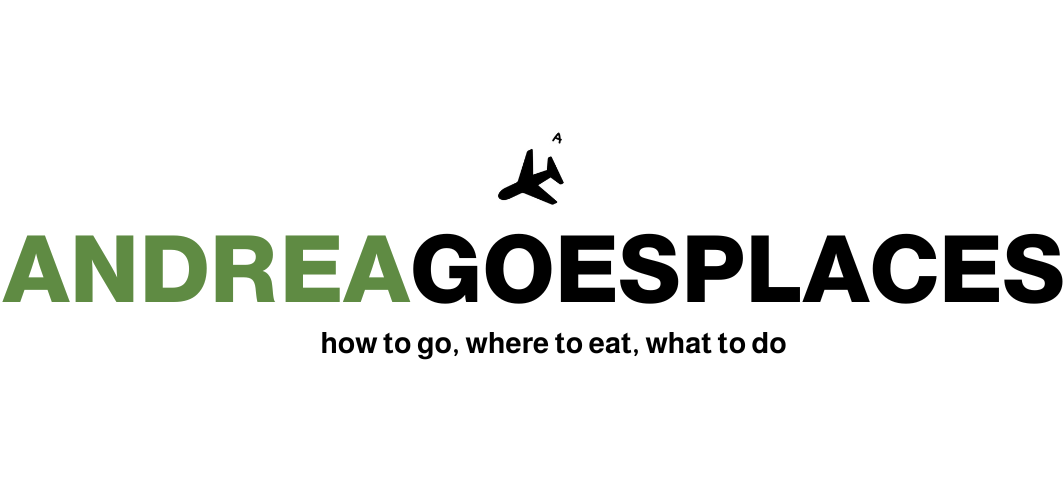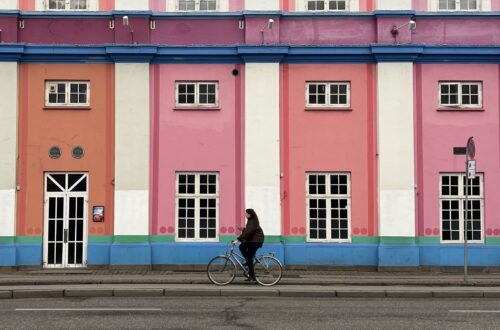
How to Take Copenhagen Public Transport: The Best Guide
You’ve just gotten to the CPH airport or København H train station, ready to explore the city! As you look on Google Maps for the best way to get around, you notice that you can take the bus or bus. But how do you pay for public transport? Are there different transit companies? What are the zones?? Tackling the Copenhagen public transport can be confusing, but after reading this guide, you’ll be a pro. The public transportation in Copenhagen is extensive and convenient, and it’s one of the best ways to get around. So, here’s how to take Copenhagen public transport as a tourist.
Understanding Copenhagen’s Public Transportation Network

Copenhagen’s public transportation system seamlessly connects the city’s diverse neighborhoods, suburbs, and attractions. You can travel anywhere in Copenhagen and on the island of Zealand. At its core are 4 components: the metro, buses, trains, and harbor buses (ferries).
Metro:
The backbone of Copenhagen’s city center transit network. The Metro is a fairly new service, constantly adding new stations and expanding its service. Metro trains are sleek, modern, and clean. It’s a hassle-free way to navigate Copenhagen’s central districts and all routes have frequent service, with a car coming every 5 minutes. Use the metro to get around the city center.
S-Trains:
Extending beyond the city center, the S-train network links Copenhagen with its surrounding suburbs and neighboring towns. These trains provide a comfortable and reliable means of transportation for commuters and travelers alike. Use the S-Trains to go to neighboring towns and further distances.
Buses:
Copenhagen’s extensive bus system crisscrosses the city, reaching areas not accessible by train. From standard city buses to night buses and express routes, there’s a bus for every journey, offering flexibility and convenience. Use the bus to get around the city center and to neighboring towns.
Harbour Buses:
For a unique perspective of the city, Copenhagen’s harbour buses traverse the harbor and canals. You can easily zig zag from different attractions across the canals without having to travel around the water. They offer both practical transportation and sightseeing opportunities. Use harbor buses to cross the city center canals.
How Copenhagen Public Transport Tickets Works

Copenhagen’s public transportation system is divided into zones, each encompassing specific areas of the city and its surroundings. You can purchase tickets or passes valid for one or more zones, depending on your intended destination. The more zones you travel, the more value you get out of your ticket. You can travel up to 30 zones in one ticket. Here is a map of the zones in the Copenhagen urban area:

Luckily, all the public transportation in Copenhagen uses the same payment system. Meaning, one ticket gets you on all the transportation methods so you don’t have to buy separate tickets.
Ticketing options include single-ride tickets, day tickets, multi-day tickets, monthly passes, 20 day pass, and a top-uppable transit card, the Reksekort. So, there are options for both occasional riders and frequent commuters. Additionally, special tourist cards, such as the Copenhagen Card, offer unlimited travel on public transport alongside free admission to numerous attractions. However, most visitors get single-tickets or multi-day passes.
You can buy tickets in person, at machines, and online. At every metro and train station there are ticket machines you can easily buy tickets from. Just input your current location and destination and the machine automatically calculates the zones for you. You can buy tickets online via the DOT app, which is the official Copenhagen transportation app.
So, which public transportation method is best for you? That depends on the length of your trip and how often you travel. So, let’s get into it!
Best Ticket for Occasional Travelers Staying 6 Days or Less
If you’re visiting Copenhagen and only going to take public transportation once or twice per day, then the single ticket is best for you. The cheapest day ticket is 80 DKK per adult, so unless you are taking the metro or bus more than three times a day, the day ticket doesn’t make sense. You save money paying for each ticket per ride.
For single tickets, you can buy them in person at ticket machines at metro or train stations and online using the DOT app.
Best Ticket for Frequent Travelers Staying 6 Days or Less
If you’re staying in Copenhagen for 2-5 days, and using transportation more than three times a day then the day or multi-day pass (City Pass) is best for you. The city pass gives you unlimited travel on all Copenhagen public transport.
The DOT app offers day passes from 1 to 5 days (24 to 120 hours) for zones 1-4 and 1-99, and day passes for zones 101-199, 201-299, and 1-299. The value of a day pass increases when you travel for more days, meaning the price per day is cheaper. However, most tourists travel in the Copenhagen city center area (zones 1-4), so the most basic city pass works best.
Depending on how long you are staying for and where you want to travel in Denmark, there are city passes for everyone. Here’s a table I made with the types of city passes, where you can go, and the prices for each:
| Travel Period ↓ | Zones → | 1-4 | 1-99 | 1-299 | 101-199 | 201-299 |
| 24 Hr (1 Day) | 90 DKK | 180 DKK | 280 DKK | 180 DKK | 180 DKK |
| 48 Hr (2 Days) | 160 DKK | 320 DKK | — | — | — |
| 72 Hr (3 Days) | 220 DKK | 440 DKK | — | — | — |
| 96 Hr (4 Days) | 280 DKK | 560 DKK | — | — | — |
| 120 Hr (5 Days) | 340 DKK | 690 DKK | — | — | — |
You can buy a city pass in person at ticket machines at metro and train stations, or online on the DOT app. If you’re not sure what zones you are traveling in, no worries. The ticket machines will automatically calculate the zones you are traveling once you input your starting station and destination. The DOT app also has a zone map you can refer to as well.
If You’re Also Visiting Attractions…
Consider the Copenhagen Card! It’s a digital tourist card that includes unlimited public transportation (including to the airport) and admission to top attractions (80+). They offer cards for 24-120 hours (1-5 days), starting at $73 USD (479 DKK). While it is convenient, it’s not for everyone. See if the Copenhagen Card is worth it for you in my blog here.
Best Ticket for Frequent Travelers Staying a Week or More
If you’re staying in Copenhagen for 6 days or more and frequently taking public transportation, then the month commuter pass is your best option.
The month commuter pass includes unlimited travel on all public transport between a selected number of zones for either 30 or 60 days. Depending on how long you are staying, you can definitely get your value if you commute a lot. The longer your Copenhagen trip is, the more time you have to use the pass. The shorter your trip, the less time you’ll have to use the pass and the more you’ll have to use public transport per day.
For example, the cheapest commuter card is 580 DKK for 2 zones (the minimum) for 30 days. A single ticket for 2 zones is 24 DKK. To break even, you need to take at least 24 single two zone trips, since 24 times 24 is 576, which is just about the cost of the monthly pass.
If you have 1 week in Copenhagen, you’ll have to take a minimum of 3-4 trips per day to make the pass worth it. If you have 2 weeks in Copenhagen, that means you have to take minimum 2 trips per day to make the pass worth it. 3 weeks in Copenhagen, and you can take transit once per day and make the pass worth it. As long as the total amount of trips you take add up to 24 (for this pass), it’s worth it.
On average, you need to take 26 single trips to make any month commuter pass worth it.
Commute20?
The DOT also offers the Commute20 pass, but honestly, it’s not worth it.
This ticket is designed for people going to work 2-3 times per week. The Commute 20 pass gives you 20 flexible trips that are valid for a period of 60 days. You flexibly decide when to use the days and activate the ticket each day you travel. The cheapest Commute20 ticket costs 720 DKK for 2 zones (the minimum)!
You also can only travel between two specific zones, as you can’t travel between another 2 zones (for ex. a Commute20 for zones 1-2 won’t work for zones 31-32 even though they are traveling between 2 zones). So, this is more expensive and less flexible than the commuter month pass. I’m not sure why they even offer this pass… just get the monthly pass.
Best Ticket for Occasional Travelers Staying a Week or More

If you’re staying in Copenhagen for 6 days or more and only occasionally taking public transportation (less than 24 single trips per month), then the Rejsekort is your best option.
The Rejsekort card is a refillable public transit card you use to tap on and off Copenhagen public transport. You can use it to pay for all public transportation in Copenhagen, which makes it super convenient to use. No more paying for different transport modes with different systems.
It’s a reloadable card that deducts money per trip, and you reload it every time the balance runs low. The best thing about it is that you no longer have to buy single tickets and can tap on and off public transit. Another perk is that you get a 20% discount on all fares if you travel with a Rejsekort during off peak hours.
For people who live in Denmark, you can get the Rejsekort Personal, which requires a Danish address. But for tourists, you can get the Rejsekort Anonymous which does not require an address or name, AND you can pass it to someone else if you’re not using it. However, to use the Rejsekort Anonymous, you must have 80 DKK on the card in order to tap and pay for transport. Otherwise, you’ll need to top it up. The Rejsekort Personal only requires 20 DKK on the card to use.
How to Get a Rejsekort Anonymous

You used to be able to buy the Rejsekort Anonymous card at the airport from DSB machines, but they were removed and no longer at the airport. Now, you can only buy a Rejsekort Anonymous card from a verified retailer, which you can see on the map here. All the retailers are convenience stores or kiosks like 7-Eleven which are next to the main metro and train stations like Nørreport and København H.
Cost: The card costs 80 DKK and you have to add a minimum of 80 DKK on the card to use. So, for the card you’ll be spending a total minimum of 160 DKK.
If you’re coming from the CPH airport, you’ll have to buy a train ticket to one of the stations with kiosk selling the Rejsekort (which you can confirm on the retailer map). Make sure to pick a retailer location close or on the way to where your accommodation is. Once you get to the train or metro station, go to the retailer and ask for a Rejsekort Anonymous card at the cash register. You can pay for it using DKK cash or a credit card. Once you’ve bought your card, you’re ready to take public transit in Copenhagen!
How to Use the Rejsekort Anonmyous Card
The Rejsekort operates on a tap on and tap off system since Copenhagen public transport fares are based on zones. Before you get on any public transport, you have to tap on at the card machines near the train tracks or at the front of the bus. The machines have circle pads that light up in a blue color and will say “Check ind” in a green box under the circle. When you get off, tap off at the card machines designated for checking out. It will look the same as the checking in machines but say “Check ud” in a red box under the card circle. Once you tap off, the fare will deduct from your balance.
Switching Public Transport on One Journey:
If you are switching public transportation modes, do NOT tap off on your current ride. Only tap off when you are ending your trip and have reached your destination. Otherwise, the card will charge you for two rides rather than one. For example, say you are taking the metro and bus to get somewhere. Tap on to the metro, then exit the metro and tap on to the bus, then tap off once you reach your destination. Tapping on and tapping off tells the system you are ending your journey. If you tap on and off the metro, then on and off the bus, you will be charges for two journeys rather than one.
Topping Up Your Rejsekort:
You can top up your Rejsekort Anonymous card in all metro and train stations at a top up machine or at a Rejsekort retailer. You can use both cash and credit card. The money automatically transfers and is instantly ready to use. You cannot top it up online, unfortunately.
The Best Way to Get Around Copenhagen: Biking

Copenhagen public transportation is great, but the best way to get around the city is by biking. Copenhagen is the best biking city in the world! It’s smooth, safe, and orderly. Almost everyone who lives in Copenhagen bikes to get around and only uses public transport if the weather is bad.
Biking is much faster than public transport sometimes, too! It’s the default transportation method, and tourists can bike, too! It’s the Danish way. Here’s how to rent a bike in Copenhagen and the best way to rent. Once you’ve gotten a bike, here’s how to bike in Copenhagen with all the rules you need to know before you bike.
Beyond biking, Copenhagen is a very compact city and extremely walkable. You can get from one side of Copenhagen to the next by walking an hour in one direction. Most of the attractions are in the city center as well, so walking from place to place is very doable. It’s a great way to take in the city as well—wander around and see where you end up!
Practical Tips for Navigating Copenhagen
Here are some tips for getting around Copenhagen using public transport:
- Take Multiple Transport Methods: Copenhagen’s public transportation network integrates well with each other. If the subway or train seems crowded, opt for the bus and vice versa. Optimize your journey by combining metro, S-trains, buses, and even bicycles, depending on your destination and preference.
- Purchase the Right Ticket: Purchase the ticket with the correct number of zones you are traveling, as you can get fined traveling on the wrong ticket. Also, make sure that the number of hours or days you are in Copenhagen matches the one on a day or multi-day pass.
- Travel During Off Peak Hours: Rush hour in Copenhagen gets busy, with full train and metro cars and congested bike lanes. For the best experience, travel when its less busy like during non-commute hours. You also get a 20% fare discount with the Rejsekort!
- Be Prepared for Ticket Inspections: To be honest, I’ve only ever been checked on trains for tickets. Ticket inspectors rarely check on the metro, and never on the bus. A lot of locals might seem like they’re not checking in on the metro and bus. However, that’s because they have monthly passes that don’t need to be checked in or have tickets. Don’t fall for it! Make sure you have a valid ticket or travel card ready for inspection at all times to avoid fines.
- Respect Public Etiquette: Follow common courtesy and etiquette when using Copenhagen’s public transportation. Offer your seat to those in need, keep noise levels to a minimum, and refrain from eating or drinking onboard.
- Stay Informed: Public transport schedules may vary on weekends and holidays, so plan accordingly to avoid any surprises. Also, be aware of any closures, detours, or delays.
- Explore Beyond the Tourist Hotspots: Public transport connects all of Copenhagen, so take the time to explore local neighborhoods and beyond just Indre By and Gammel Strand.
Explore Copenhagen Like a Pro!
Now you know the ins and outs of Copenhagen public transport and can start exploring! Take the metro, train, bus, ferry, or combination of the four to get where you want to go. Book a ticket or day pass on the app or in person, or purchase a tourist or transit card. Whatever kind of traveler you are, there are options the best suit your trip. At first, you might have been intimidated or confused by the transportation in Copenhagen. But after reading this guide, hopefully it’s much more approachable and easier to navigate. It really is an easy system to use, and once you take your first trip or two, you’re good to go! (Definitely give biking a go, though!) Happy travels!





